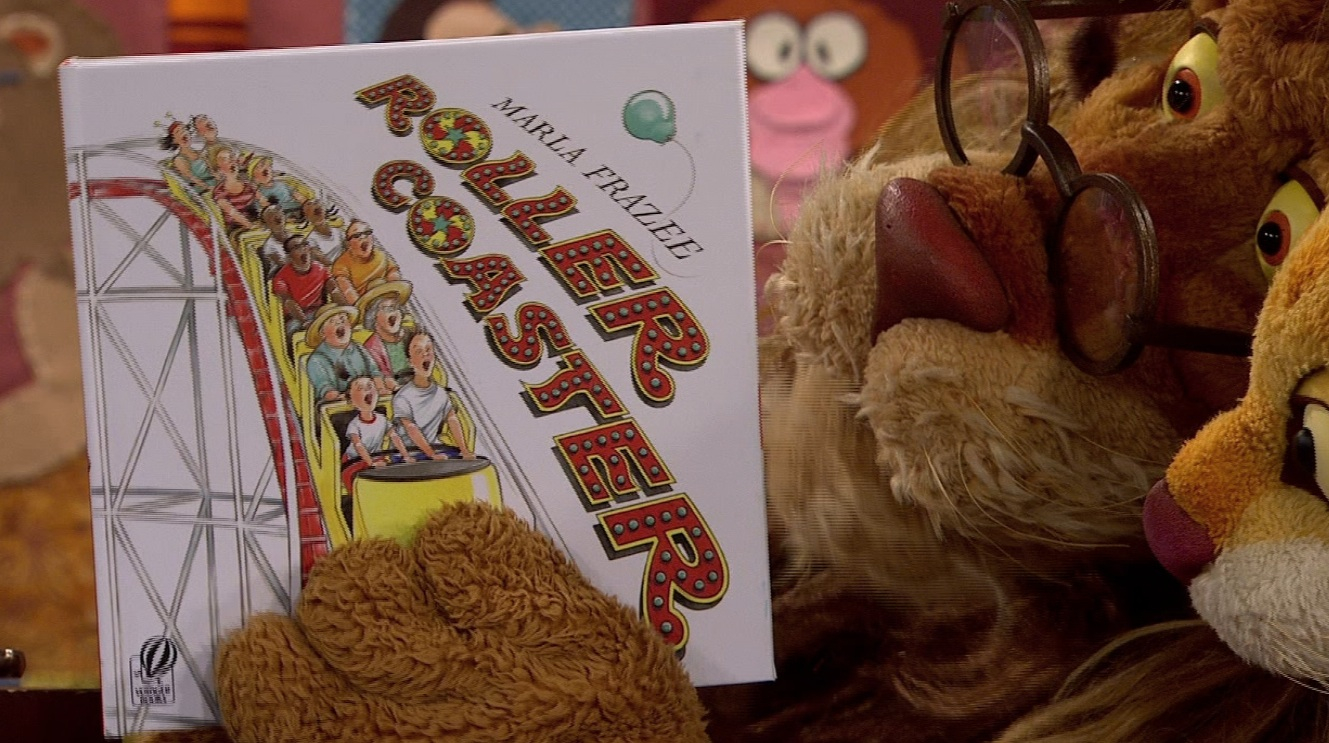- “Roller Coaster” (BTL show)
- brake
- move
- operator
- ramp
- roller coaster
- slant
MA Standards:
Speaking and Listening/SL.PK.MA.2: Recall information for short periods of time and retell, act out, or represent information from a text read aloud, a recording, or a video (e.g., watch a video about birds and their habitats and make drawings or constructions of birds and their nests).
MA Draft STE Standards:
Physical Sciences/Motion and Stability; Forces and Interaction/PS2.B: Using evidence, discuss ideas about what is making something move the way it does and how some movements can be controlled. [Cause and Effect, Stability and Change]
Head Start Outcomes:
Language Development/Receptive Language: Attends to language during conversations, songs, stories, or other learning experiences.
Social Emotional Development/Self-Concept and Self-Efficacy: Identifies personal characteristics, preferences, thoughts, and feelings.
PreK Learning Guidelines:
English Language Arts/Reading and Literature 12: Listen to, recite, sing, and dramatize a variety of age-appropriate literature.
Watch Together: “Roller Coaster” #3 (BTL show)

STEM Key Concepts: A ramp, or inclined plane, is a surface with one end higher than the other; An object placed on an inclined plane will roll, slide, or stay put; The shape of an object affects whether it will roll or slide or stay put; Objects that slide are more likely to move on steeper inclines, and both rolling and sliding objects move faster down steeper inclines
ELA Focus Skills: Active Viewing, Make Connections, Story Comprehension, Vocabulary, Word Recognition
Before You Watch
Have children watch the video Between the Lions “Roller Coaster” again.
- Encourage children to share what they know about roller coasters.
- Then prompt them to share what they remember from the show.
- Provide a viewing focus by having children notice all the ramps and trackways in the video.
As You Watch
Ask children to read along if they remember parts of the story or if they recognize any words.
- Pause and have children act out the motion words and encourage them to include sound effects.
After You Watch
After children watch the video, ask questions such as,
- How is a roller coaster like a ramp?
- What did you notice about the direction of the cars when they moved slowly up the ramp? (going up the ramp)
- What did you notice when the track slanted down steeply?
Discuss when the people got into seats at the top of the roller coaster ride. Ask questions such as,
- Was the roller coaster moving when people got on the roller coaster? What kept it from rolling? Guide children to recall that the operator had to release the brake.
- Ask, Does this give you any idea about a new exploration you might try to stop things from rolling down a slide?
Adaptation: If very young children have difficulty remembering the story, encourage them to tell one thing they remember.
English Language Learners: Have children name something they remember from the video in their home language. Ask all the children to repeat. Then supply the English words and have everyone repeat.
Social Emotional Tip: As children read about feelings, they become more attuned to their own feelings and how to express those feelings.

